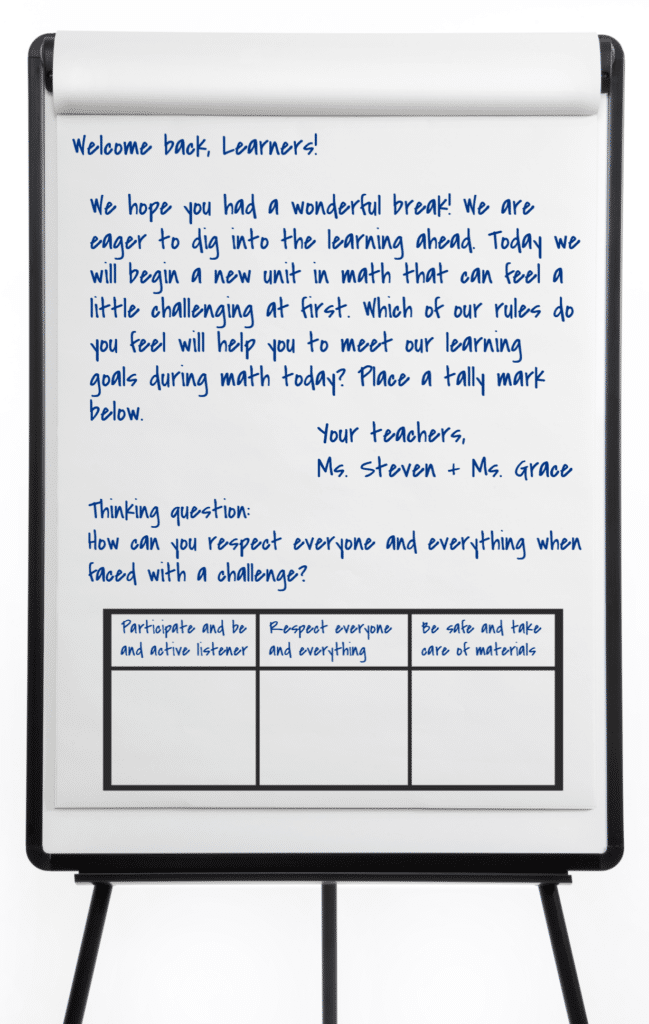
Are you struggling to write your Morning Meeting message? This is a common problem when teachers focus too much on being imaginative or entertaining when writing Morning Meeting messages. Remember that the message is not meant to be a work of art or a brilliant sound bite. It’s meant to be a functional note that is relevant to the day and that engages your students in literacy practice.
I tend to break the message down into four elements that become quite routine:
I allude to a subject or theme we’re studying (“Dear Oceanographers”), play with alliteration (Good morning, Wonderful Wonderers”), use a juicy vocabulary word (“Hello, Persistent Fourth Graders”), or just give a hearty welcome (“Welcome, Learners!”).
I might write these or, for young students learning to write days of the week, I might leave a blank for them to fill in.
Often this reinforces and extends something we’re working on in the classroom—a science theme, a read-aloud, a math topic, or a social issue. Other times I offer a playful word of the day, a math puzzler,a trivia question, or—this is one of my favorites—a “class riddle” taken from student sharings during recent Morning Meetings (see example below). With older students, I sometimes refer to events in the news. In all cases, I include a task for students to do on the chart or during discussion. Here are some examples:
“Yesterday we read a new story together, and everyone decided that the characters seem very realistic. In the space below, write the name of one character and a word that describes a realistic trait in that character.”
“In math we are working on fractions. If one-fourth of our class wore pajamas to school, how many students would that be? Write your answer at the bottom of this chart.”
“We will continue to talk about our classroom rules. Think about a way you showed respect for a classmate yesterday. What does the word ‘respect’ really mean anyhow? Be prepared to share your ideas at Morning Meeting today.”
“Which student in this class has a new relative? Who went somewhere for the first time last week? Who got lost at the fair? Write your guesses on an index card and bring the card to Morning Meeting today.”
Some teachers have a set theme for each day of the week. For example, every Monday the focus and interactive task will be about students’ weekend; every Tuesday it will be about math; every Wednesday it will be science; and so forth. This ensures that the content varies from day to day, yet provides some predictability, which students tend to find reassuring.
This part of the message lets students know about visitors we’ll be having, an upcoming trip, or some other special event. Or it simply gives an everyday classroom direction. It gives further practice in reading and following instructions, and it saves voice time. Some examples:
“Please put your trip notices in the brown envelope on the door.”
“We will have visitors from the Theater Project today. Remember how we talked about welcoming them.”
“Please put your homework paper in the blue basket, then sign up for a committee for our salmon project.”
I hope these suggestions help. Remember, the point isn’t to create something original and entertaining each day. It’s to build community and motivate learning through written information. The very value of Morning Meeting messages comes largely from the fact that students can count on it being in a predictable format every day.
For a more comprehensive look at Morning Meeting, including morning message, check out The Morning Meeting Book.
Ruth Sidney Charney is the author of Teaching Children to Care.